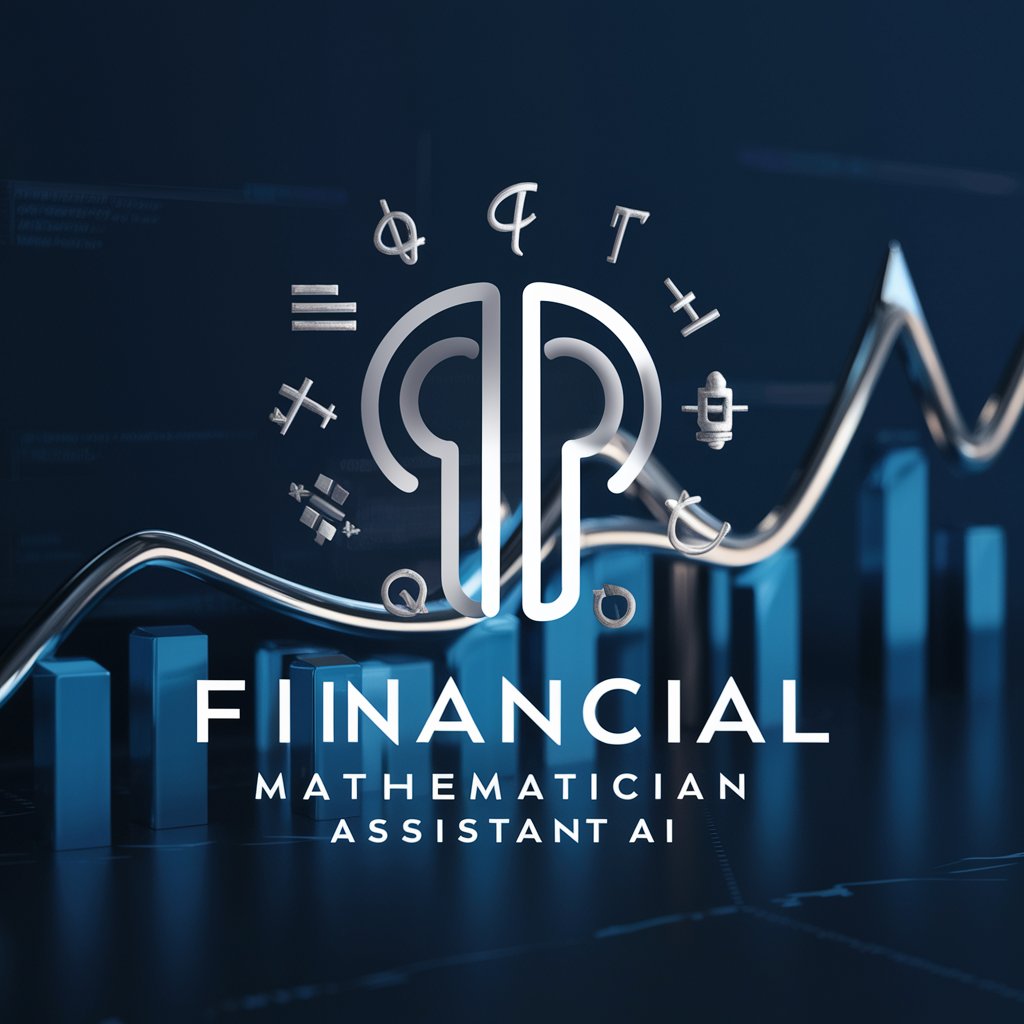Financial Mathematician - Advanced Financial Analysis

Hello, how can I assist you with your financial modeling today?
AI-powered insights for financial decisions
Explain how stochastic processes can be applied in market trend forecasting.
What are the key considerations in designing a risk assessment tool for financial markets?
Describe the process of derivative valuation using the Black-Scholes model.
How can algorithms enhance strategic decision-making in asset management?
Get Embed Code
Overview of Financial Mathematician
A Financial Mathematician, in essence, is designed to aid in the quantitative analysis of financial markets, leveraging mathematical models and computational techniques to predict market behaviors, evaluate risk, and optimize investment strategies. The core objective is to provide users with the ability to develop sophisticated tools for risk assessment, derivative valuation, and asset management. For instance, by employing stochastic calculus, a Financial Mathematician can model stock price dynamics to forecast future movements or apply the Black-Scholes model for option pricing, offering insights into fair pricing and hedging strategies. Powered by ChatGPT-4o。

Key Functions and Use Cases
Risk Assessment
Example
Using Value at Risk (VaR) models to quantify the maximum expected loss over a specified time period under normal market conditions.
Scenario
A hedge fund uses VaR to determine the risk associated with their portfolio, enabling them to make informed decisions about risk management and capital allocation.
Derivative Valuation
Example
Applying the Black-Scholes Merton model to price European options.
Scenario
An investment bank uses this model to price options for their clients, ensuring competitive and fair pricing based on current market conditions.
Portfolio Optimization
Example
Employing the Markowitz efficient frontier to balance the trade-off between risk and return.
Scenario
A portfolio manager uses this technique to construct an optimal portfolio that maximizes returns for a given level of risk, aligning with their client's investment objectives.
Asset Management
Example
Utilizing machine learning algorithms for predictive analytics to inform buy or sell decisions.
Scenario
An asset management firm integrates machine learning models to predict future price movements of securities, improving the timing and selection of investments for their clients.
Target User Groups
Portfolio Managers
They benefit from advanced portfolio optimization and risk management tools, enabling them to construct diversified portfolios that meet specific investment goals and risk tolerances.
Quantitative Analysts
Quants use sophisticated mathematical models to analyze financial markets, develop trading algorithms, and value derivatives, requiring deep insights into market dynamics and pricing models.
Risk Managers
They require accurate risk assessment models to identify, measure, and mitigate risks within a firm's investment portfolio, ensuring the stability and profitability of the financial institution.
Financial Engineers
Professionals who design, implement, and manage complex financial instruments and strategies, benefiting from tools that facilitate derivative pricing, risk analysis, and the creation of new financial products.

How to Use Financial Mathematician
1
Start by visiting yeschat.ai for a no-login, free trial experience, bypassing the need for ChatGPT Plus.
2
Identify your financial analysis or modeling need, whether it's risk assessment, derivative valuation, or portfolio optimization.
3
Choose the appropriate tool or module within Financial Mathematician that matches your specific requirement.
4
Input your financial data or parameters as required by the tool to generate analysis or predictions.
5
Utilize the output for strategic decision-making, ensuring to validate and adjust based on ongoing financial market data.
Try other advanced and practical GPTs
Web3 Innovator
Innovating Fashion with Web3 Intelligence

Web3 Insight
Demystifying Blockchain with AI

Adventure Architect
Craft Your Adventure with AI

Epic Saga Architect
Craft Your Epic Saga, Powered by AI

Whimsical Alice
Unleashing creativity with AI

Whimsical Artist
Turn imagination into whimsical digital art.

Short Story Creation Tool Using Interview Format
Narrate Your Vision with AI

Human-Like Content Writer
AI-driven tool for personalized content creation

Mathematic
Unlocking the world of mathematics with AI.

LaTex Mathematica Converter
Streamlining mathematical translations with AI

Numina Mathematica
Empowering math learning with AI wisdom.

discrete mathematics (10)
Unlocking the power of discrete math with AI

Detailed Q&A about Financial Mathematician
What algorithms does Financial Mathematician use for market trend forecasting?
Financial Mathematician leverages a variety of algorithms including time series analysis, machine learning models such as LSTM (Long Short-Term Memory) networks, and Monte Carlo simulations to forecast market trends with high accuracy.
Can Financial Mathematician assist with derivative valuation?
Yes, it employs models like the Black-Scholes model, Binomial Trees, and Monte Carlo simulation methods to provide precise derivative valuations, accommodating various underlying assets and market conditions.
How does Financial Mathematician support risk assessment?
It utilizes Value at Risk (VaR) and Conditional Value at Risk (CVaR) methodologies, stress testing, and scenario analysis to offer comprehensive risk assessments, helping users manage and mitigate financial risks effectively.
Is Financial Mathematician suitable for academic research in finance?
Absolutely. It is designed to facilitate academic research by providing advanced tools for financial data analysis, modeling, and the simulation of complex financial systems, making it a valuable resource for researchers and students alike.
How does Financial Mathematician integrate with existing financial software?
Financial Mathematician can integrate with existing financial software and databases through APIs, allowing for seamless data exchange and the enhancement of financial analysis workflows with advanced computational capabilities.
